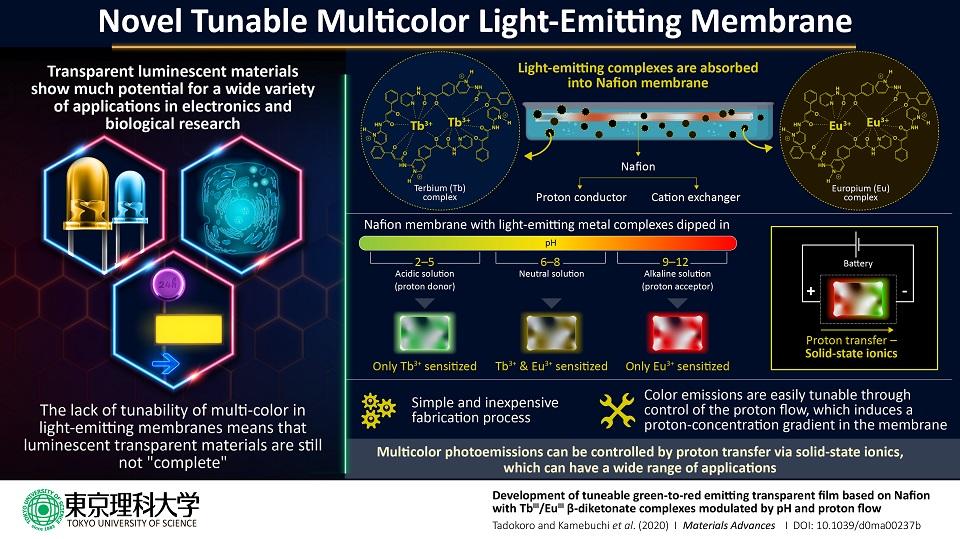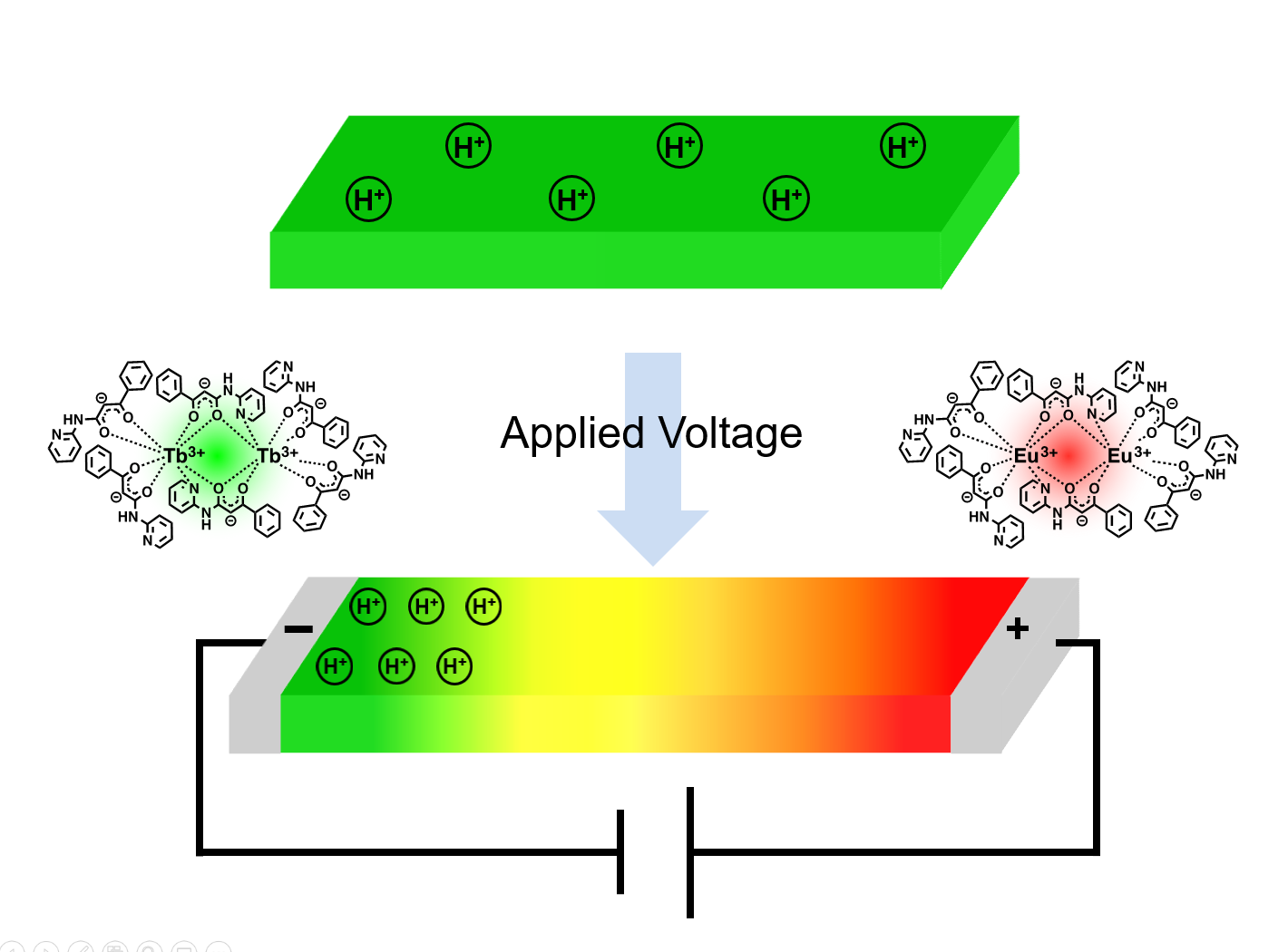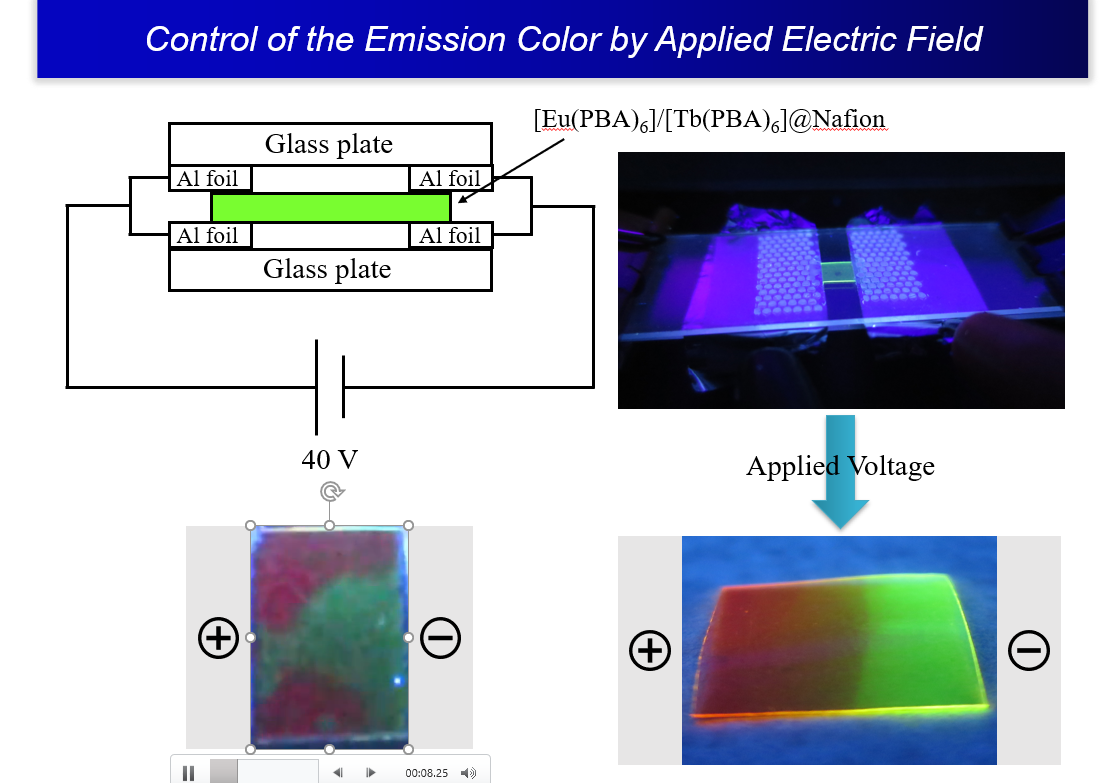Researchers from Tokyo University of Science reported an achievement of developing transparent films that can tune the emitting color. This innovation of color tunable transparent films may provide a wide range of application potential for LED displays and illumination.
Published in The Royal Society of Chemistry's Materials Advances, the research team described the mechanism it has developed to tune the photoemission of a solid polymeric film. The method is to control the flow of protons in it by applying a voltage. The study provided insights into the creation of more efficient multicolor transparent luminescent materials.

This material was developed in the lab of Professor Makoto Tadokoro, an inorganic chemist and materials scientist at Tokyo University of Science in Japan. The research team began with a transparent polymeric film called Nafion. Nafion films are well-known as proton-conductors (materials in which electricity is conducted via the movement of protons) and cation exchangers (materials that readily attract positively charged particles). These two properties proved key to the luminescence control afforded by the material that it would eventually help form.
In addition, the molecular structure of Nafion allowed "complexes" of two light emitting metals to be embedded in it when it was dipped in a solution containing the metal complexes. Thus, the fabrication process of the material was simple and inexpensive.

(Mechanism of changing of light emission color induced by proton flow; image: Tokyo University of Science)
The final product, a metal-complex-containing polymeric film, would turn to green, red, and yellow color when soaked in solutions with different PH values. The scientists explained that the acidic solutions would turn on the Tb metal ions of protons but not the Eu metal ions. In alkaline solutions, Eu metal ions took the spotlight and emissions from the Tb ions were quenched. In neutral solutions, both emitted light. This confirmed that the proton concentration gradient within the material determined its luminescence.
The scientists were then able to easily tune the luminescence by hooking the material to a battery after dipping it in an acidic solution. The acidic solution made the material green. But upon application of a voltage, as protons moved towards the negatively charged side of the material, the proton-deficient positively charged side began to turn red. The central portion of the material became yellow.

(Demonstration of change of light emission color in Nafion membrane induced by proton conductivity; image: Tokyo University of Science)
Prof. Tadokoro commented, "Our findings show that it is possible to fabricate inexpensive multicolor emitting glass or film materials whose emissions can be tuned by simply applying a voltage to control the proton flow, and therefore proton gradient, within the material. In other words, not only electron conduction, but proton conduction can be a way in which the luminescence of materials is controlled."
The team is also trying to add blue light emitting complex into the system for creating a material that can emit light over the entire visible spectrum that enable further applications.














